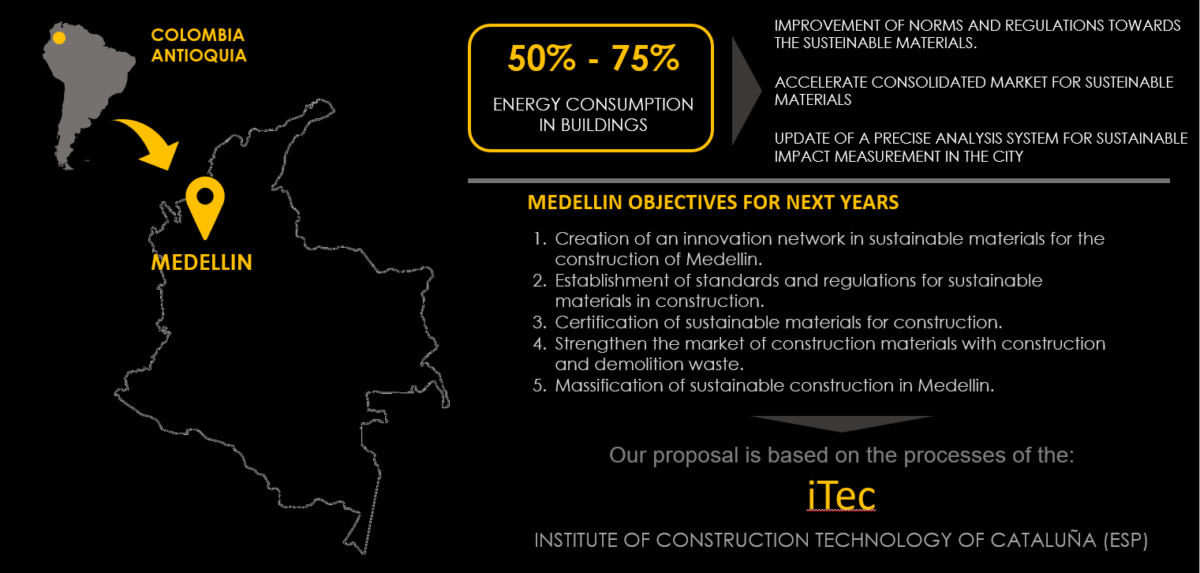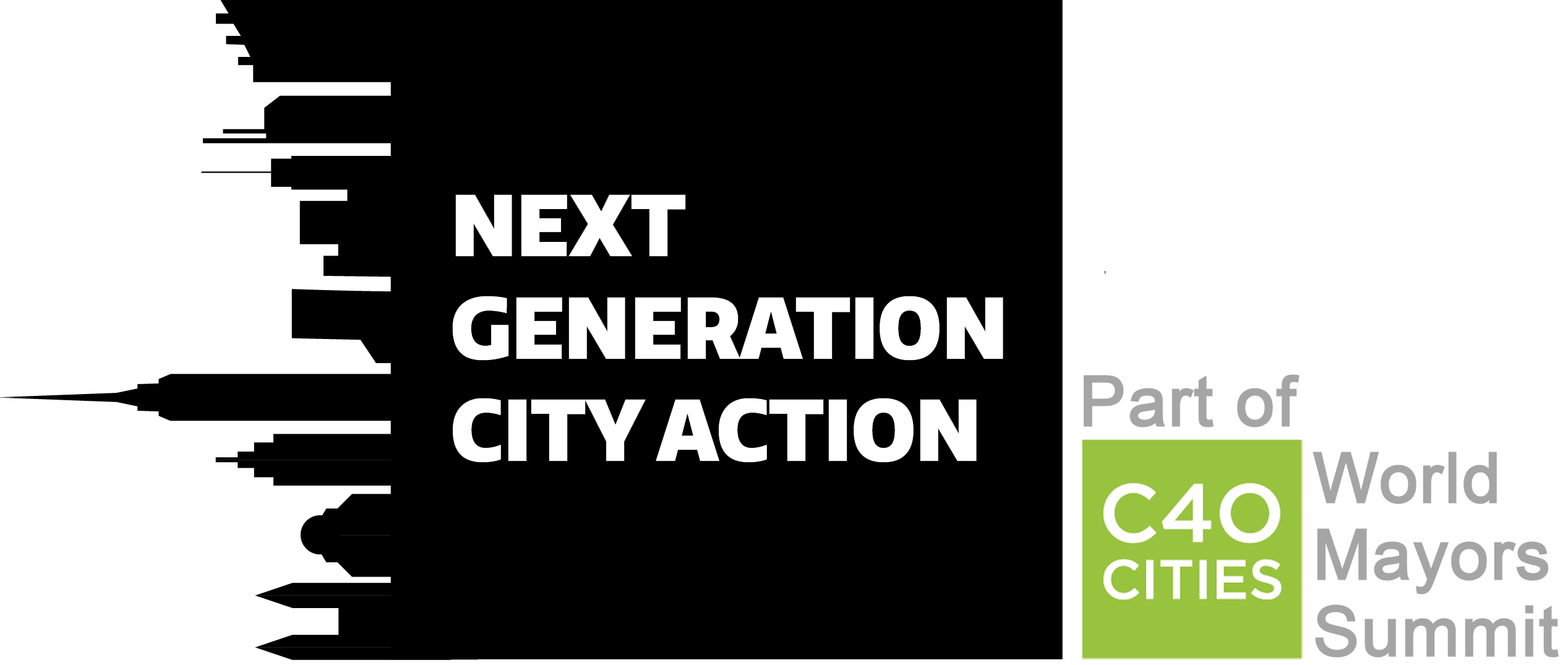
We believe that alliances and collaborative work must be took with more importance, since collaboration is the ideal system to achieve the main goal: The Creation of Sustainable Cities.
IL STUDIO
ARCHITECTURE &URBANISM FIRM
About Medellín
Nowadays, in Medellín, there are several approaches in which the government affirms that construction dynamics are being implemented with the BIM (Building Information Modeling) methodology. The main problem is that regardless of the government, these methodologies are still repealed due to lack of knowledge about the benefits that could be generated in the city. “BIM analyses redundant data, erases communication lag and noise, maintains updated information, brings operational efficiency, improves coordination among departments and gives an overall efficiency to the whole life span of the project. With large infrastructural projects BIM is a must.” (Jerick Pag, 2015)
“50%-75% of energy consumption and greenhouse gas emissions in Medellin are caused by buildings, this problem occurs because there’s a very low control over the construction processes, construction methodologies and lack of sustainable materials.” (Harlem Acevedo, 2012) In addition to generating large carbon emissions pre, during and after constructions, this problem has therefore had lack of support for the creation of new materials, the limitation of entrepreneurship and the economic improvement of the city. “It is estimated that the world market for sustainable materials for construction will grow from USD $ 116 million to USD $ 254 million in 2020.” (Ruta N, 2015)
A regulated work process or system must be established so that the construction area can emerge, we need a specialist system that focuses on the new technologies and methodologies offered by first world countries. In order to reach this goal, we have decided to replicate and adapt the work system and processes of the iTec (Institute of Construction Technology of Catalonia, Spain) in the city of Medellin, considering that Medellín has the following objective points:
Medellín Objectives for 2030
- Creation of an innovation network in sustainable materials for the construction of Medellín.
- Establishment of standards and regulations for sustainable materials in construction.
- Certification of sustainable materials for construction.
- Strengthen the market of construction materials with construction and demolition waste.
- Massification of sustainable construction in Medellín.

Solution
Regulatory Institute for Sustainable Cities (RISC)
This new regulated system that we propose must adhere to the name of an Institution that will seek that the 4 principal stakeholders of AEC (Architecture, Engineering, Construction) Industry work under the same unified process and the same goal. They must analyze, promote, develop and solve any failure or gap that is missing to shorten the distances to the future of sustainable cities.
Principal stakeholders in AEC Industry:
- Material Suppliers
- Architects
- Builders
- Government
RISC is a reference institution in the AEC industry that focuses in the dissemination of technological information to offer the set of professional tools that support stakeholders for the continuous improvement of efficiency and competitiveness, as well as for their positioning. RISC, under the BIM methodologies, will seek that the 4 stakeholders in construction, work under our regulated scheme, helping them to communicate and use our “BIM Database Cloud” to raise all 3D REVIT sustainable material models
BIM DATABASE CLOUD
- BIM Database Cloud is a library of generic BIM objects, they will represent basic building elements used in the construction field (surface foundations, portico structures, exterior and interior enclosures, roofs, doors and windows, false ceilings and floors).
- This first set of objects will be followed by successive extensions to offer a range of different typologies, materials and construction systems used in building and civil engineering.
3D MODELING
- REVIT is a 3D modeling platform for the AEC industry that allows the creation of a virtual model of a detailed construction. It helps you create a direct analysis about the structures and mechanics of construction, but, above all, the planning and construction process.
- Its interpolation with other platforms (Autodesk) allows to create a computer modeling space capable of providing exact quantifications of the resources necessary for the construction of a project, including, also, construction budgets. This with the objective of carrying out construction work in the best possible way.
Process
In order to establish this process in a more efficient way, together with the Medellín government, we will establish a series of mandatory requirements to maintain a minimum standard for the construction of buildings and thus be able to massify and force the construction of sustainable buildings.
- Suppliers: They must specify all the relevant information in the REVIT model of their sustainable material. This must include data from the manufacturer, thermicity, energy saving parameters, and any other relevant information required by the platform. After elaborating all this information, they can upload the model to the cloud.
- Architects and builders: They must download the models from the database cloud to load them into their architectural model and verify by simulations that the material provided by the supplier provides the specifications according to their needs.
- Government and public entities: As the main member of this system and allied, it must create a series of requirements and regulations that establish the minimum design parameters and the forced use of sustainable materials and RISC platforms.

Requirements
- Mandatory use of REVIT platform for the construction of new buildings.
- Each supplier of sustainable materials must upload its REVIT model to the “BIM Database Cloud” platform with its minimum sustainable requirements. This includes certificates of material quality, sustainable production processes and sustainable construction methods.
- Voluntary certificates of higher quality and requirement index may be added, as well as certificates from external institutions such as: LEED, BREEAM, Green Star, Green Mark Scheme, DGNB, CASBEE, HK BEAM and Green Building Index.
- The new entrepreneurs based on new materials required to follow regulations based on the previously mentioned certification systems. These will be supported by our institution through a ranking in the database to strengthen the market and generate competitiveness among the stakeholders.
- Builders or architectural firms that seek to build new or remodel current buildings, must work under the use of REVIT and the minimum bioclimatic design standards taught by the institute.
- Each project must carry out an energy simulation and deliver the results to the institution to validate compliance with the regulations and thus be able to acquire a construction license.
Benefits
- Controlled and measurable massification of sustainable buildings.
- Quality control of materials and construction systems.
- More efficient and sustainable construction and production processes.
- High competitiveness among suppliers that will allow higher quality indices and lower accessible prices.
- Real and measurable analysis of sustainable impact for buildings in the city.
- Construction regulated under sustainable regulations.
- Educational institutions will support new ventures and participate in the implementation and research of BIM systems.
- A work process that will allow the detection of opportunity areas to really change and improve the construction industry
Allied Institutions
- Ruta N Medellín-Center for innovation and business
- ITEC-Instituto Tecnológico de la Construcción
- Ministry of Housing, City and Territory of the Republic of Colombia.
- Chamber of Commerce of Medellín for Antioquia
- LAB Medellín
- CAMACOL-Cámara Colombiana de la Construcción
For this project we need public and private entities that we can trust. We believe that with this solution, conflicts of interest can be generated for certain people or organizations that oversee construction in Medellín.
Conclusion
We believe that the regulations that we will implement are severe and strict for those involved, but today, the earth has begun to suffer consequences of our actions and we must respond directly. The implementation of the Regulatory Institution of Sustainable Cities (RISC) will help to fulfill all the proposed goals that the city of Medellín has for the year 2030. The implementation of a regulatory body is necessary to massify, industrialize and create viability in sustainable construction, from the production and creation of materials, to the implementation and post construction methods.

About Us
We are two students from Tecnologico de Monterrey who in 2017 created IL Studio, an Architecture & Urbanism Firm that seeks to transform the way we all see architecture & urbanism in Latin America towards a Productive view.
www.ilstudio.mx
[email protected]
References
Acevedo, H. (2012). Sostenibilidad: Actualidad y necesidad en el sector de la construcción en colombia. September 25, 2019, de Universidad Nacional de Colombia Sitio web: https://revistas.unal.edu.co/index.php/gestion/article/view/30825/39307
Lópes F. . (February 2015). Avance: Mercado de Construcción. Ruta N Medellin Centro de Innovación y Negocios, Observatorio CT+i, 86.
Jerick, P.. (2015). Importance of Building Information Modeling. Septiembre 18, 2019, de Outsource 2 Sitio web: https://www.outsource2india.com/eso/construction/articles/building-information-modeling-importance.asp#
Forero S. (2018). BIM Forum Colombia 2018. September 17, 2019, de CAMACOL Sitio web: https://camacol.co/bim-forum-colombia-2018
ITEC. (2019). Las ventajas de trabajar con una base de datos estructurada. September 23, 2019, de ITEC Sitio web: https://itec.es/infoitec/bases-datos/las-ventajas-trabajar-con-base-datos-estructurada/
Cámara de Comercio de Medellín para Antoquia. (2018). Metodología BIM para el sector de la construcción. September 25, 2019, de Cámara de Comercio de Medellín para Antoquia Sitio web: https://www.camaramedellin.com.co/articulos-y-noticias/noticias/metodologia-bim-para-el-sector-de-la-construccion
ASOBIM. (2017). ¿QUÉ ES BIM?. October 1, 2019, de ASOBIM Sitio web: http://asociacioncolombianabim.co/que-es-bim/
